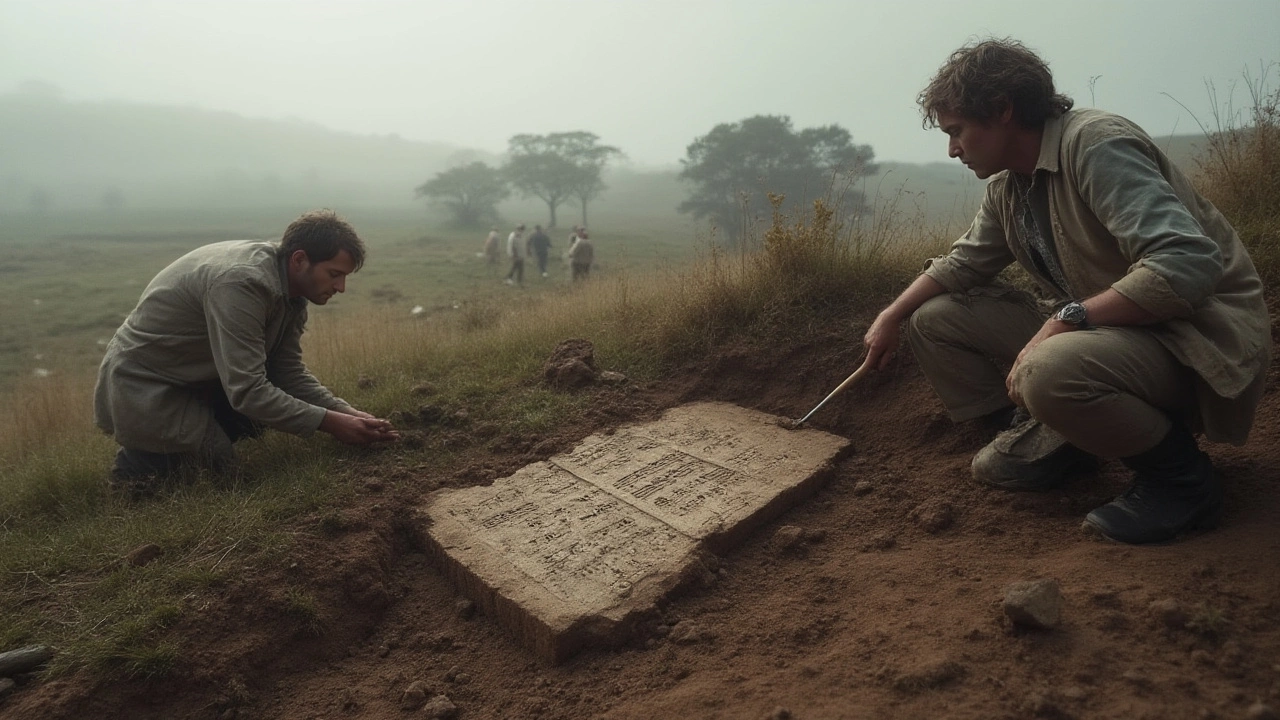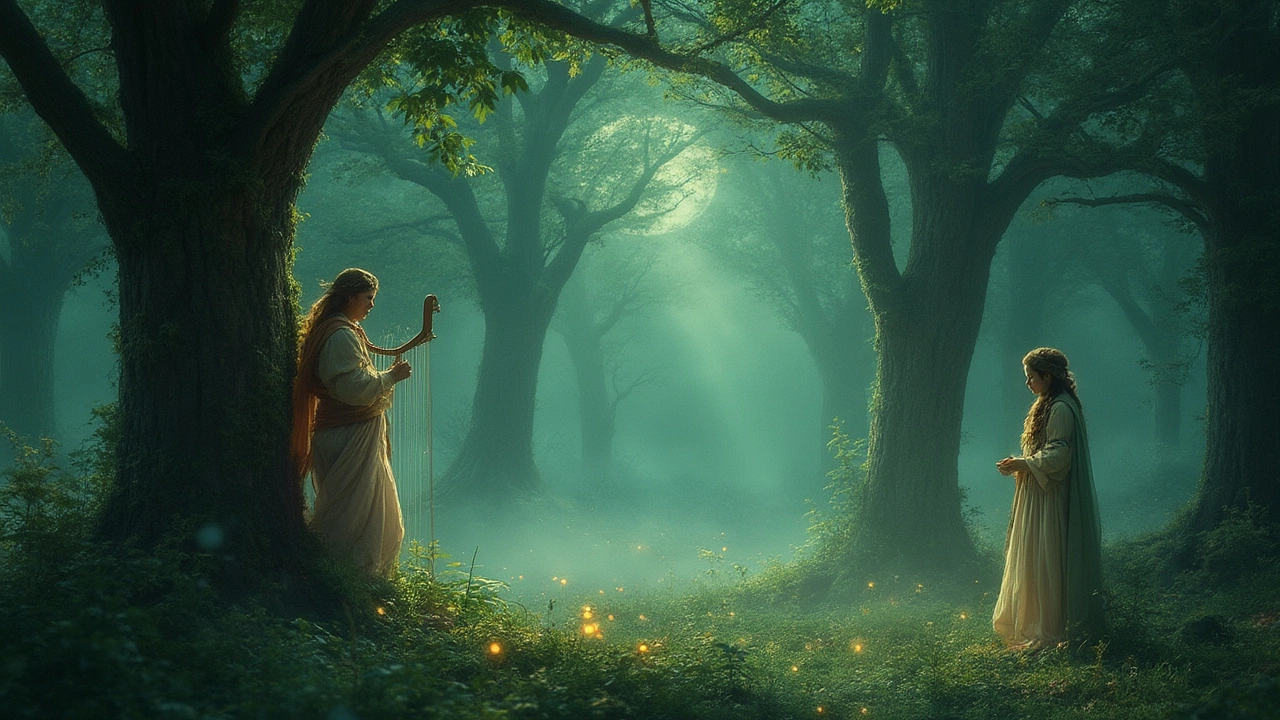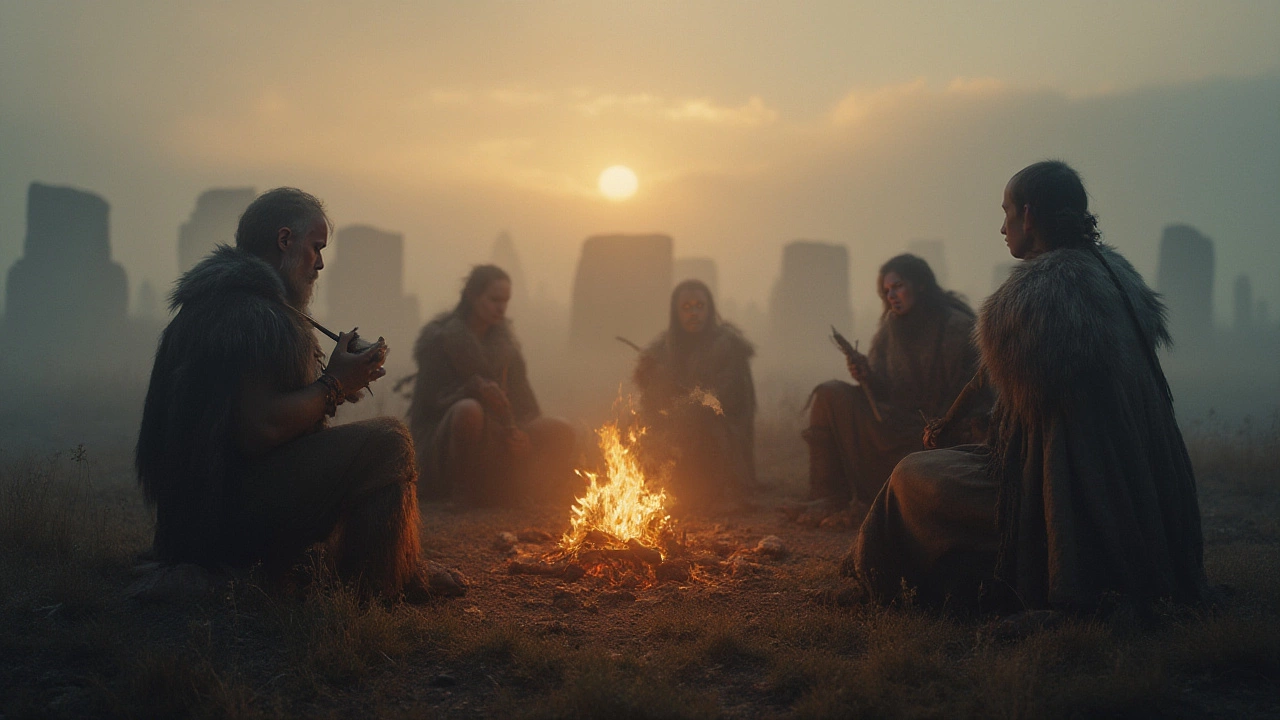Imagine a world before music. No lullabies, no birthday songs, no melodies drifting from a neighbor’s window. It’s a hard picture, isn’t it? Music feels ancient, almost baked into our DNA. For years, Sable (my daughter) would ask that same question after bedtime singalongs: “What was the first song ever?” Turns out, nobody can point to one tune, but there’s a wild story unraveling behind this question—a real detective quest stretching across millennia.
The Search for the Oldest Song: Where Did It Begin?
The hunt for the so-called first song leads into dusty caves, ancient tombs, and weathered clay tablets. Let’s lay out the facts: humans have likely been singing for tens of thousands of years, way before we started scribbling down notes on paper or inventing fancy instruments. Archaeologists found bone flutes that might be as old as 40,000 years. Picture a group of early humans, huddled around a fire, using their voices to mimic animals, call the spirits, or simply to calm their restless kids at night. They didn’t write anything down, so their songs vanished as memories faded, just like my mom’s forgotten family tunes.
Still, scientists look for clues. In northern Germany, a 42,000-year-old vulture-bone flute surprised everyone in 2009. Its holes matched musical intervals you’d hear on a modern scale. That means those ancient folks were likely playing melodies—maybe short, haunting tunes. Not a "song" in the Spotify sense, but something musical, for sure.
But what about actual songs with words? There, things get tricky. The oldest known fragment of written music—music we can sort of reconstruct—comes from ancient Mesopotamia. Think Iraq, around 1400 BCE. In the ruins of the city Ugarit (now in Syria), archaeologists found clay tablets pressed with wedge-shaped cuneiform writing. One of these, called "Hurrian Hymn No. 6," is often dubbed the world’s oldest known song.
Here’s what’s wild: the tablet doesn’t just have lyrics. It includes a kind of notation, instructions for playing the song on a lyre (think: small harp), along with the words in Hurrian, a forgotten language. The topic? A prayer to Nikkal, goddess of orchards. That’s right—humanity’s best surviving candidate for “first song ever” is about fruit trees. There’s something comforting in that.
Of course, nobody’s 100% certain how the song sounded. Scholars have debated for decades, squinting at the notation and disagreeing about the rhythm and melodies. If you search for "Hurrian Hymn No. 6” on YouTube, you’ll find a bunch of versions, all sounding different. Some are slow and haunting, others have a lilting, sing-songy feel. They're guesses, not exact copies, but they all carry a sense of mystery that’s hard to explain.
It’s not just the Hurrian Hymn, either. Ancient Egypt, Greece, and China—these places kept records too, in their own ways. The "Seikilos Epitaph," carved in stone near modern Turkey, dates to somewhere between the first and second century CE and is the oldest surviving piece of a complete musical composition, including lyrics, notation, and rhythm. Here’s how the lyrics go, in translation: “As long as you live, shine. Let nothing grieve you beyond measure. For your life is short, and time demands its toll.” Not exactly pop anthem material, but timeless advice, honestly.
Sifting through all these fragments, a picture appears: the oldest songs we know were prayers, chants, or messages to the gods. They were functional, woven into rituals—medicine, mourning, harvest, or celebration. You can almost imagine that music started not for entertainment, but as a bridge to something bigger, bolder, or just unexplainable.
| Name | Origin | Date | Notes |
|---|---|---|---|
| Hurrian Hymn No. 6 | Ugarit (Syria) | c. 1400 BCE | Oldest known example of written song, prayer to a goddess |
| Seikilos Epitaph | Near Ephesus (Turkey) | c. 1st-2nd Century CE | Oldest surviving complete musical composition |
| Ancient Sumerian Hymns | Mesopotamia | c. 3000 BCE | Fragments, mostly lyrics without full notation |
| Chinese Qin Songs | China | before 500 BCE | Ancient poetry intended for music, no full original melodies survive |

Why Did Humans Start Making Music?
Let’s pause and ask: why do people invent music at all? If you listen closely to a baby—any baby, really—they babble in musical tones long before they understand words. There’s something instinctive about stretching sound, humming melodies, and keeping rhythm (just ask a toddler banging on pots). Evolutionary psychologists argue that music might have helped our ancestors survive by bringing them closer or soothing their nerves. Ever had a song soothe you after a nightmare? You’re not alone; our deep ancestors likely experienced the same comfort.
There’s a study from Harvard published in 2019: after mapping music from 315 cultures around the world, researchers found that every single one had lullabies, dance songs, healing tunes, and—even more fascinating—ritual music for saying goodbye to loved ones. These weren’t cultural flukes; they seemed baked into human experience. Nobody needed YouTube, sheet music, or expensive lessons to make music—just a voice and something to hit or pluck.
Even scientists can’t resist debating its true purpose, though. Could music be tied to mating rituals, like a bird showing off its feathers? Maybe. But music’s deeper hold is hardwired: it rewards our brains, bonds us with family and friends, and gets our bodies moving. Watch kids at a playground—nobody teaches them to dance. They just do.
And then there’s culture, which took these simple musical basics and ran wild. Over centuries, music became far more than ritual chanting or motherese. Ancient Greeks invented music theory, medieval monks developed complex notation, and by the modern era, societies layered on harmonies, structured forms, and genres. Yet at its core, music’s oldest threads—repetition, catchy tunes, drums, and the human voice—still hold everything together.
Want a tip for uncovering the roots of music on your own? Pay attention to the simplest songs you know: nursery rhymes, basic chants, or call-and-response folk tunes. They’re the living descendants of those prehistoric firelight songs: passed on by ear, reshaped across centuries, and stubbornly addictive to little ones everywhere. (Sable’s favorites involve animal noises—some things really don’t change.)

How Has the Idea of a “First Song” Changed in Modern Times?
It’s tempting to scroll through your playlist and imagine a neat family tree, tracing today’s hits backward to “the first song ever.” But music isn’t like inventions with a patent or a birth certificate. Instead, it’s a web—old ideas, sometimes disappearing for centuries, suddenly revived by someone who’s never heard them, or transformed by new tools and tastes.
The idea of a "first song" keeps shifting as we uncover new evidence or reinterpret old finds. For decades, the “Hurrian Hymn No. 6” held the unofficial world record for oldest song we could actually sing (or attempt to). If you measure “song” as any organized sound, though, then those bone flutes and primal chants reach much further into the past. Every year may bring a new discovery. Just recently, artificial intelligence helped decode some ancient Babylonian music, hinting at lost melodies never before heard by modern ears. Strange thought, right?
Western music, with its obsession for written records and precise notes, sometimes misses the forest for the trees. Go anywhere in the world, and you’ll find people making music from the “gut,” so to speak: African griots improvising oral histories, Aboriginal Australians weaving songlines that map the land, or villagers in rural India who’ve never used written notes but sing generations-old melodies every festival. Those traditions might not leave etched tablets behind, but they’re every bit as old as what archaeologists dig up. Oral tradition has carried music as far, and maybe farther, than any cuneiform or papyrus scroll.
Even now, as we digitize every note and backup to the cloud, music remains slippery. Think of all the lost tracks from musical history—tunes never written down, performances never recorded, and stories never told. Technology can only do so much; sometimes, you just need a memory, a family, and the hush of nighttime to pass on a melody.
One fascinating fact: British archaeologists working in caves near Bristol found evidence that children, 15,000 years ago, invented bone whistles with holes. Turns out, kids have always figured out how to make noise—whether parents like it or not. Today’s music teachers would probably say, not much has changed. If you want to experience music close to its roots, look for traditions that don’t rely on written scores: folk festivals, drum circles, communal chanting. It might not be “the first song ever,” but it’s as close as you’ll get to hearing our ancestors’ voices leap across time.
If you’re curious (or you have a kid who asks wild questions at bedtime), here’s a checklist for exploring ancient music with modern tools:
- Search for “Hurrian Hymn No. 6” recordings online—listen to a few versions and spot the differences.
- Make your own bone flute or whistle from a drinking straw to understand the basics of ancient instrument-making.
- Read up on the Seikilos Epitaph, then try singing its lyrics. It’s surprisingly catchy in its own melancholy way.
- Visit a local museum with ancient instruments or check virtual collections online.
- Ask elders or friends if they know any traditional songs from their own childhood; record them if you can. That’s oral history in action.
The next time you hear a simple tune—maybe as your kid drifts to sleep—remember, you’re carrying on a tradition older than cities, castles, or even written words. Somewhere, tens of thousands of years ago, someone probably sang a song not so different from your own.

